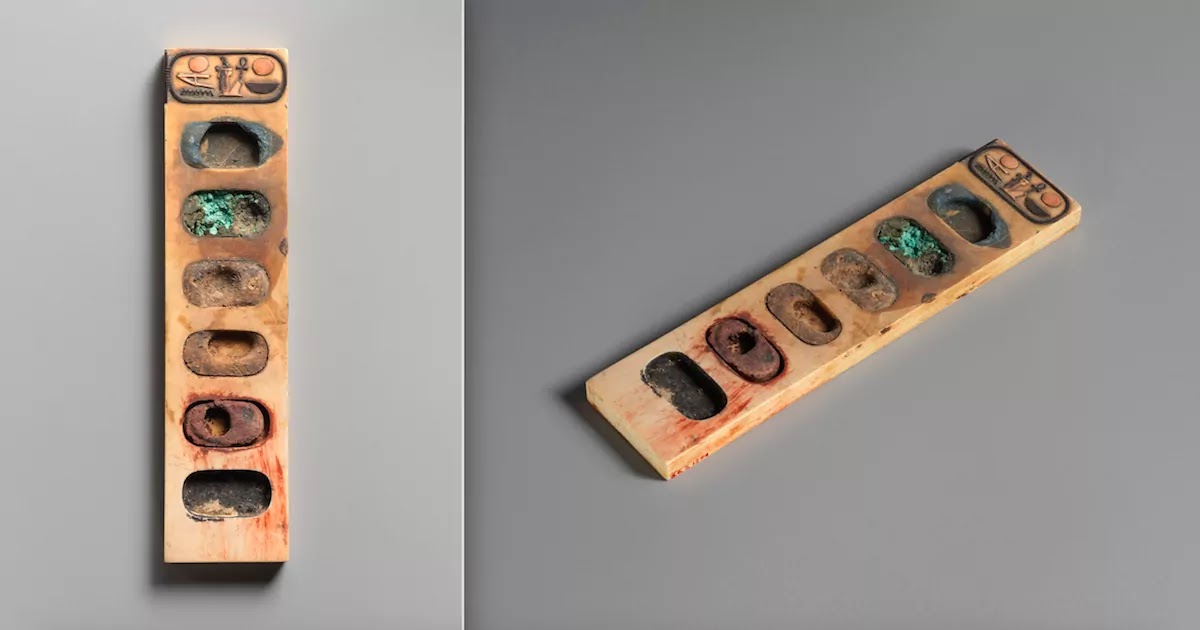
This artist's palette may look fairly modern, but it is over 3000 years old! The Ancient Egyptian artefact sits in the Egyptian wing of New York City's Metropolitan Museum of Art and is one of the world's oldest examples of artistic tools. It has been preserved to a brilliant degree and the original colours are still visible.
The palette is believed to have belonged to Amenemopet, vizier to Pharaoh Amenhotep III (c.1391 – c.1354 BC), who was hired to paint on behalf of the Pharaoh. Made from a single piece of ivory, it carries the inscription 'beloved of Re', which refers to the sun god Re and the son of the pharaoh, Akhenaton. Akhenaton would later succeed his father to the Egyptian throne.
The painter would have been contracted to paint on walls, coffins, pottery and a range of other items owned by the wealthy of Ancient Egypt.
The eight-colour son the palette includes 6 traditional colours and 2 mixes. These colours were made from a variety of naturally occurring materials such as gypsum, carbon, iron oxides, blue and green azurite and malachite.
In Ancient Egypt, each colour represented an important part of life and existence.
The six colours on the palette are:
Wadj (green) was used to refer to fertility and the natural world. It was created from the green stone malachite.
Dshr (red) was closely related to the Egyptian god Isis, which was the god of war, and was regarded as a protector of the Egyptian people. It represented blood, anger and chaos.
Irtyu (blue) represented the universe and the heavens, it is also closely related to the Nile river, which brought water to Egypt and allowed the civilisation to flourish.
Khenet (yellow) represented what was eternal, and was closely related to wealth due to the fact that it is similar to the colour of gold.
Hdj (white), as in modern times, white represented purity and virtue. The colour was often worn at religious ceremonies and by priests. It was widely regarded as not being the opposite of black, but the opposite of red.
Kem (black) represented death and the afterlife, a greatly discussed topic in ancient Egypt. Egypt's god of death, 'Osiris', was frequently referred to as 'the black one'. Curiously black, like green, was also associated with fertility.
[h/t: Open Culture]













COMMENTS